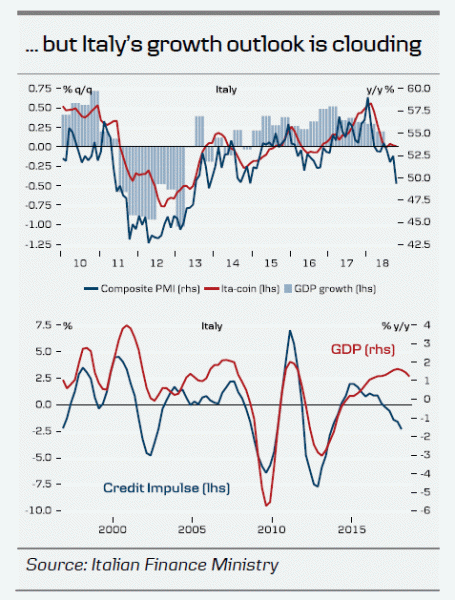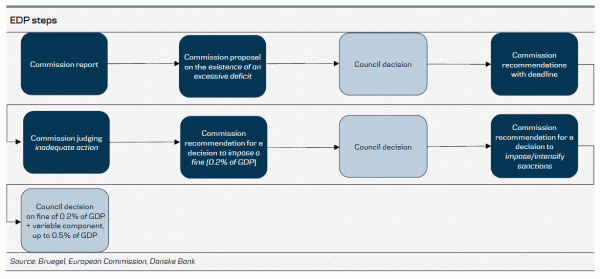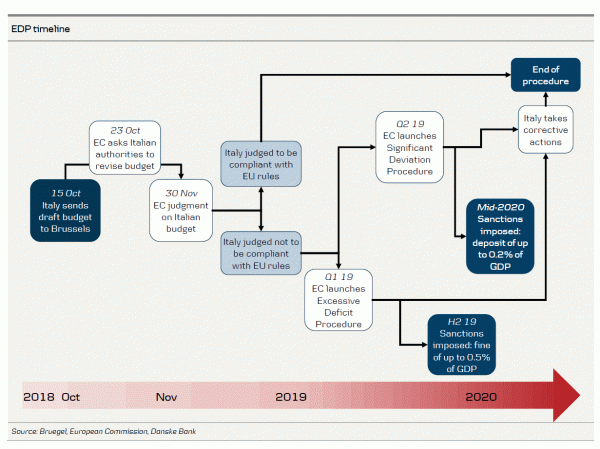The Italian government overnight resubmitted its 2019 draft budgetary plan, but in line with our expectation any changes were ‘cosmetic’ rather than substantial, in a sign that the populist leaders of the government maintained the upper hand. Both growth and deficit targets were kept unchanged, but the privatisation revenue goal was raised to 1% of GDP for 2019 (up from 0.3% prior). That means, due to a lower stock-flow-adjustment the debtto- GDP ratio is now expected to fall to 126% by 2021 – a miniscule tweak from the previous projection of 126.7%).
As the government refrained from scaling back any of its spending items, the structural deficit is still expected to increase from -0.9% in 2018 to -1.7% in 2019. This means the ‘unprecedented deviation’ of 1.5pp of GDP that the Commission stressed in its negative opinion still persists. The ball is now back in the EC’s court and it might bring forward the publication of a report on Italy’s compliance with EU debt rules to 21 November that was originally planned for spring 2019. Although the EC is aware of walking a fine line of upholding EU fiscal rules while not being seen as dictating domestic policies, we expect it to start the process of launching an excessive deficit procedure (EDP) quite quickly and maybe as early as December. In Italy’s case it is not the 2.4% deficit figure for 2019 as such that would be put forward as an argument for an EDP, but an insufficient reduction of Italy’s 131% debt/GDP ratio.
Whether an eventual budget truce is reached in 2019 remains in our view dependent on the market reaction. The EDP will be a drawn out process (see below) and it could take until H2 19 for the Commission to impose any sanctions on the country for breaching EU rules. Hence we think Italy could fade slightly as a market theme over the next couple of months, also because rating agencies have already assumed that the government will not improve the budget and the risk of further rating action for the next three to six months should be small. We have seen close to a 10bp spread widening for 10Y BTPs versus Germany this morning, which seems fair. We do not expect to see a significant spread widening for the rest of 2018 and if the global risk appetite improves the spread might actually start slowly to tighten given the higher carry.
That said, the Italian bond market could come under renewed pressure if an EDP is formally launched, and we think Italian risks could flare up again in 2019, as long as the stand-off with the EU remains unresolved. Signs are growing that the Italian economy has already been weakened by the recent political uncertainty and tighter credit conditions. Although not our base case, there is a risk that the repercussions of the budget fight trigger a recession in Italy in 2019 with adverse consequences on the debt dynamics, credit ratings and market sentiment.
Further, internal tensions between the League and Five Star on policy priorities and ideological questions have intensified in recent weeks and culminated in a Senate confidence vote last week. For now, we see only a 10-15% probability of snap elections as the two parties have an incentive to present a united front ahead of European parliament elections in May 2019, but the coalition remains a fragile truce
















